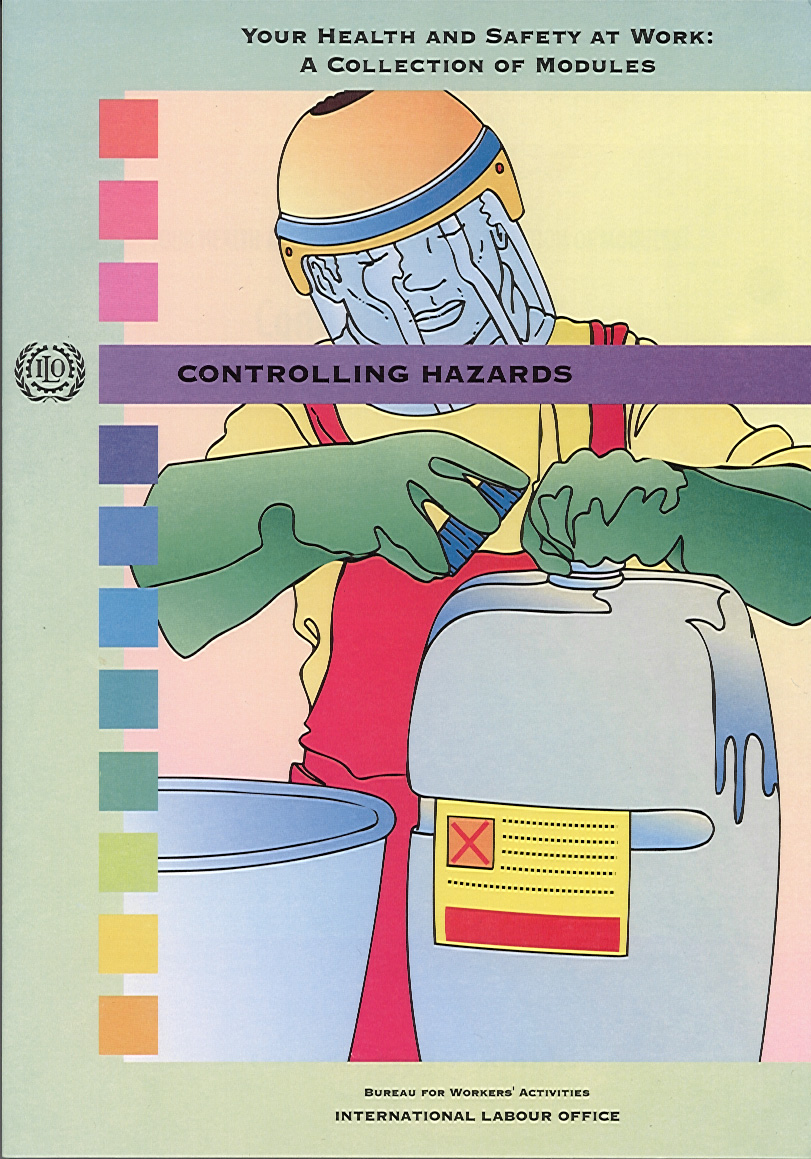

International
Labour Organization
 Your
health and safety at work
Your
health and safety at work
CONTROLLING HAZARDS
Goal of the Module
This Module provides trainees with information on various methods that can be used to control workplace hazards. Topics discussed include: eliminating hazards, substitution, engineering controls, administrative controls, personal protective equipment, how to choose control measures, and the role of the health and safety representative in using control methods to reduce occupational hazards.
Objectives
 |
At the end of this Module, trainees will be able to: (1) describe at least three
methods of control; |
What is in this Module
All workplace hazards (chemical, physical, etc.) can be controlled by a variety of methods. The goal of controlling hazards is to prevent workers from being exposed to occupational hazards. Some methods of hazard control are more efficient than others, but a combination of methods usually provides a safer workplace than relying on only one method. Some methods of control are cheaper than others but may not provide the most effective way to reduce exposures.
The most effective method of controlling hazards is to control at the source by eliminating the hazard or by substituting a hazardous agent or work process with a less dangerous one.
Before thinking about what control measures are needed, first you need to know whether there are health and safety problems in your workplace, and if so, what they are.
How can you identify health and safety problems?
Here are some of the ways you can identify health and safety problems:
Once you recognize a hazard, then you can determine which measure will correct the problem most effectively. Generally, there are five major categories of control measures: elimination, substitution, engineering controls, administrative controls and personal protective equipment. Eliminating a hazard means removing it completely; substitution is replacing one hazardous agent or work process with a less dangerous one. An engineering control may mean changing a piece of machinery (for example, using proper machine guards) or a work process to reduce exposure to a hazard; working a limited number of hours in a hazardous area is an example of an administrative control (for example, job rotation); and personal protective equipment (PPE) includes ear and eye protection, respirators, and protective clothing.
Remember: it is always better to control the hazard as close to the source as possible. Using personal protection is the least acceptable and least effective of all control measures.
 |
|
|
|
Elimination of a specific hazard or hazardous work process, or preventing it from entering the workplace, is the most effective method of control.
Eliminate hazards at the “development stage”
It is important to consider worker health and safety when work processes are still in the planning stages. For example, when purchasing machines, safety should be the first concern, not cost. Machines should conform to national safety standards — they should be designed with the correct guard on them to eliminate the danger of a worker getting caught in the machine while using it. Machines that are not produced with the proper guards on them may cost less to purchase, but cost more in terms of accidents, loss of production, compensation, etc. Unfortunately, many used machines that do not meet safety standards are exported to developing countries, causing workers to pay the price with accidents, hearing loss from noise, etc.
 |
|
|
|
Continue to Section B: Substitution